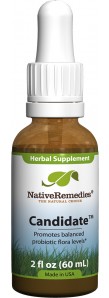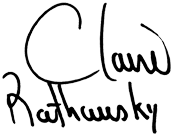Symptoms of Candidiasis
Below is a list of signs and symptoms of Candida which are common for people with yeast overgrowth. With effective treatment, most or all the symptoms will either improve or disappear for the sufferer. The sufferer may have most symptoms at the very worst, or just a few as in one or two.
It is a difficult condition to diagnose as each person may be affected in a different way in different parts of their body.
Consequently, Candida is very often misdiagnosed and the presenting symptoms are treated rather than the actual cause.
For information on what is Candida, click here…
The nervous, mental, and emotional systems:
Mood swings
Dizziness
Attention deficit disorder
Poor memory
Panic attacks
Obsessive-compulsive disorder
Depression
Anxiety
Headaches and or migraines
Irritability
Confusion
Sexual problems-a lack of desire or excessive sexuality
The digestive system:
hypoglycemia
Itchy anus
constipation and or diarrhea
cravings for chocolate, sugar, cheese, milk, pickles, alcohol, bread, fruit, vinegar and nuts
acid reflux-burping
heartburn
urinary frequency
bad breath
rashes
nasal congestion
The eyes, hair, and skin:
Nail and skin fungal infections-athletes foot, the title yeast infections, ring worm, jock itch, tinea, fungal toenails, itchy eyelids
eczema
psoriasis
Candida skin rash
prematurely greying hair
Immune disorders:
Candida is strongly linked to asthma and allergies
the autoimmune diseases-
arthritis, hyperthyroidism, Lupus, ulcerative colitis, psoriasis, rheumatoid arthritis and more
also linked to penicillin allergy
The entire body:
Weight gain
Bloating and flatulence
itchy ears
Low immune function
Excessive sweating, particularly at night
cold hands
cold feet and sometimes cold nose
varying degrees of fatigue
muscle and joint pain
fibromyalgia
Women’s health issues:
vaginal thrush
miscarriage
pre-eclampsia in pregnancy
infertility issues for women
possible links to endometriosis
premenstrual syndrome
Natural Antifungal Treatment Options
Visit our Healing Foods Page for additional information on what foods to avoid and what foods are proactive when you have a yeast infection.
Using probiotics in the fight against Candida is unfortunately not sufficient for most cases, except perhaps for very minor ones. Most cases will require some form of anti-fungal treatment as well.
Most anti-fungal agents attack or at least inhibit the growth of the fungal cell walls. Candida is particularly difficult to treat because it is capable of forming a “bio-film- around itself, which effectively protects it from your own immune system as well as antifungals. This is why Candida is so difficult to eradicate and also why the three-pronged approach is needed: diet, probiotics, and antifungals.
The most commonly prescribed anti-fungal is Nystatin (also known as Mycostatin, Nilstat, or Nystex). It’s only available through your GP and can be associated with a number of side effects, including diarrhea, headaches, nausea, upset stomach, and vomiting. Some prescription antibiotics are effective in the laboratory but once used in the human body really only manage to slow down the fungal growth. This phenomenon is known as “fungistatic”. The doses of prescription antifungals often can’t be increased to a higher dose due to issues with increased side effects. So it’s worthwhile chatting with your GP about the efficacy of prescribed anti-fungals before starting a course.
There are many natural compounds that are anti-fungal in nature. Many of these natural remedies for Candida are associated with minimal side effects and are considered safe for longer-term use alongside a comprehensive program to eradicate Candida naturally. Due to the tenacity of Candida, even natural antifungals are usually recommended in combination with lifestyle improvements in order to improve the effectiveness of treatments whether herbal or prescription. It’s also quite safe to take natural antifungals along with probiotics. It is, however, advisable to take natural antifungals at least an hour apart from your probiotics because some antifungals may also display mild antibacterial effects.
Caprylic acid is one of three fatty acids found in coconut oil that are effective against Candida. Of these, caprylic acid has the strongest effect. A study performed at Japan’s Niigata University found the anti-fungal properties of caprylic acid to be exceedingly powerful-. Caprylic acid works to disrupt the growth of the fungal cell wall. Because it is an acid, it also works to correct the pH in the gut. As caprylic acid is readily absorbed in the intestines, it is best to take an enteric-coated caprylic acid that will allow for gradual release throughout the intestinal tract.
Oregano oil. A terrific anti-fungal to add to your Candida protocol as it works slightly differently from other anti fungals. Instead of destroying the Candida cell walls, it dehydrates them. One of the active constituents found to contribute to this effect is carvacrol. Ensure that any oregano oil product you choose contains at least 50 percent carvacrol.
Grapefruit seed extract. An article in the Journal of Alternative and Complementary Medicine reported that grapefruit seed extract is effective against “800 bacterial and viral strains, 100 strains of fungus, and a large number of single and multi-celled parasites”. This comes in liquid or tablet form. Do not confuse it with grape seed extract which is a different product altogether.
Pau d’arco. The bark from the lapacho tree has been used for centuries in traditional south American herbal medicine. Not only is it considered to be anti-fungal, it is also antibacterial, anti-inflammatory, and immune stimulating. The naphthoquinones in pau d’arco have significant anti-fungal activity against Candida and it’s considered especially useful in chronic candidiasis. This is very effectively used in a liquid herbal formula in combination with other anti-Candida herbs.
Echinacea purpurea. Echinacea is widely known as an immune stimulant. This alone makes echinacea a useful herb in the holistic treatment of Candida. Additionally, alkamides found in echinacea have been found to be anti-fungal as well as antibacterial. Native to North America, echinacea has become one of the world’s most important herbs. Echinacea can be used as part of a liquid herbal formula.
Garlic (Album sativuml. Garlic originated from central Asia but is now grown worldwide. It is a powerful treatment for a host of health problems but excels at treating infection. Its inhibition of Candida albicans in both animal and test-tube studies has shown it to be more powerful than Nystatin, gentian violet, and six other reputable anti-fungal agents. It is a powerful antibiotic but also has anti-fungal properties. It’s less well known for its ability to assist in expelling parasites and lowering cholesterol.
Calendula officinalis. Calendula, also known as marigold, is a very striking plant with dark-green foliage and vivid orange flowers. It is an antiseptic herbal remedy and contains resins that are anti-fungal. Calendula helps settle digestive inflammation (leaky gut) and is detoxifying, considered cleansing for the liver and gallbladder.
Used topically, Calendula helps fungal conditions including ringworm, athlete’s foot, nappy rash and thrush. It can also be used in a mixed herbal liquid for treating Candida. Used topically, calendula helps fungal conditions, including ringworm, athlete’s foot, nappy rash, and thrush. It can also be used in a mixed herbal liquid for treating Candida.
Tea-tree (Melaieuca alternifolia). Tea-tree Is one of the most important natural antiseptics. It was first researched in 1923 in Australia and since the 1960s it has been intensively Investigated. Its antiseptic properties have been welt established and it has been shown to be effective at treating a wide range of infectious conditions, especially fungal complaints as well as vaginal thrush.
Thyme ‘Thymus vulgaris). Thyme is possibly best known as a tonic and antiseptic for the respiratory system. What is less well known is that the antiseptic and tonic properties of thyme make it a useful tonic for the immune system in chronic infections including fungal infections. Thyme is also useful for expelling intestinal. worms. Used topically, it also helps with ringworm, athlete’s foot, thrush and other fungal infections.
Neem (Azadirachta indica). Neem is a well-known herb originating in India. It has traditionally been used for gastrointestinal upsets, skin ulcers, infections and malaria. In the West it is primarily used for its antibacterial and anti-fungal properties. Neem oil can be used topically on fungal conditions such as fungal toenails alongside holistic treatment for faster symptomatic relief.
Coptis chinensis. Coptis is a herb widely used in traditional Chinese medicine. It’s very high in a plant alkaloid known as berberine. Berberine is a potent antibacterial, antiviral and anti-fungal agent. It also helps expel parasites. In Chinese medicine, coptis is considered to be a very cold herb and would not be used in cases where the digestion was thought to be “cool:.
Olive leaf extract. Olive Leaves have been widely used as a traditional remedy in Mediterranean countries and modern research has found olive leaf extract to be anti-inflammatory, to lower high blood sugar levels and act as a cardiovascular tonic. At low concentrations, olive leaf extract has shown unusual combined antibacterial and anti-fungal action to numerous organisms, including Candida Albicans. Olive leaf extract can be used as a herbal extract alongside other complementary anti-fungal herbal remedies as part of a multi-pronged anti-candida program.
My suggested herbal remedy which I have found effective after self-treating for my Candida Infection
Herbal Candida Treatment that Works.
Although Candidate gets its power from just three ingredients, it’s definitely one of the more reliable supplements for Candida. It works fast by helping your intestinal tract eliminate the toxins that have invaded it and it doesn’t have dangerous or annoying side effects.
Its ingredients have been carefully selected and blended by professionals and experts in the field of natural health to ensure maximum benefits and results. This formula complies with the very strict pharmaceutical standards – the same that regulate drug companies. You owe it to yourself to learn more about this herbal Candida treatment and see how it can help you.
Here is what you’ll find in Candidate:

Calendula officinalis is another of the ingredients found in Candidate. This is used for its anti-inflammatory and strong anti-fungal properties. Calendula officinalis benefits the liver in aiding in the process of removing dangerous toxins from the body. Its use as a tonic helps improve systemic liver functioning overall.
The last ingredient, Cymbopogon citrates, which is more commonly known as lemon grass, benefits the body in several ways. It has both anti-fungal and anti-bacterial properties. In cases where Candida overgrowth or the “leaky gut” syndrome has occurred, this ingredient actually assists in the repair of any damaged intestinal walls.
And there’s more. Cymbopogon citrates stimulate cells and that is important in the regeneration process. Finally it has been proven useful for treating infections inside the intestines and for treating Candida albicans, a pathogenic intestinal flora.
Digestive enzymes
Digestive enzymes can also often be helpful in the fight against Candida by optimizing digestion. When digestion is optimal, hydrochloric acid in the stomach is such that Candida should be destroyed before it reaches the small intestine. Digestive enzymes can be sourced in tablet form and taken with meals. Apple cider vinegar. Often touted as a Candida cure, raw apple cider vinegar has enzymes, vitamins and minerals as well as acetic acid and malic acid. The acids are particularly of interest as they help to acidify the colon, which creates an environment much
While women may battle with thrush, men may display no symptoms of Candida at all and still be carrying the infection. less conducive to the proliferation of Candida. Unpasteurized apple cider vinegar is best used as a short-term adjunct to a holistic approach to Candida management. Long-term use can potentially damage tooth enamel and could cause low potassium. It’s best taken orally, diluted with water.
Finally, a tip before you launch into the wide world of treating Candida. If you are having unprotected intercourse with your partner it’s very likely that both of you may have Candida. This infection is something you can pass to your partner, even though it’s not considered an STD. While women may battle with thrush, Candida symptoms in men may not manifest at all and still be carrying the infection. Alternatively, your partner may have jock itch or a fungal toe infection and has never connected it with your battle with thrush or other Candida symptoms.
It’s highly advised that before starting treatment you consider switching to a barrier method of contraception [condoms) and allow no unprotected contact to occur until both partners have completed the Candida treatment and are free of infection.
Wishing you wellness,




